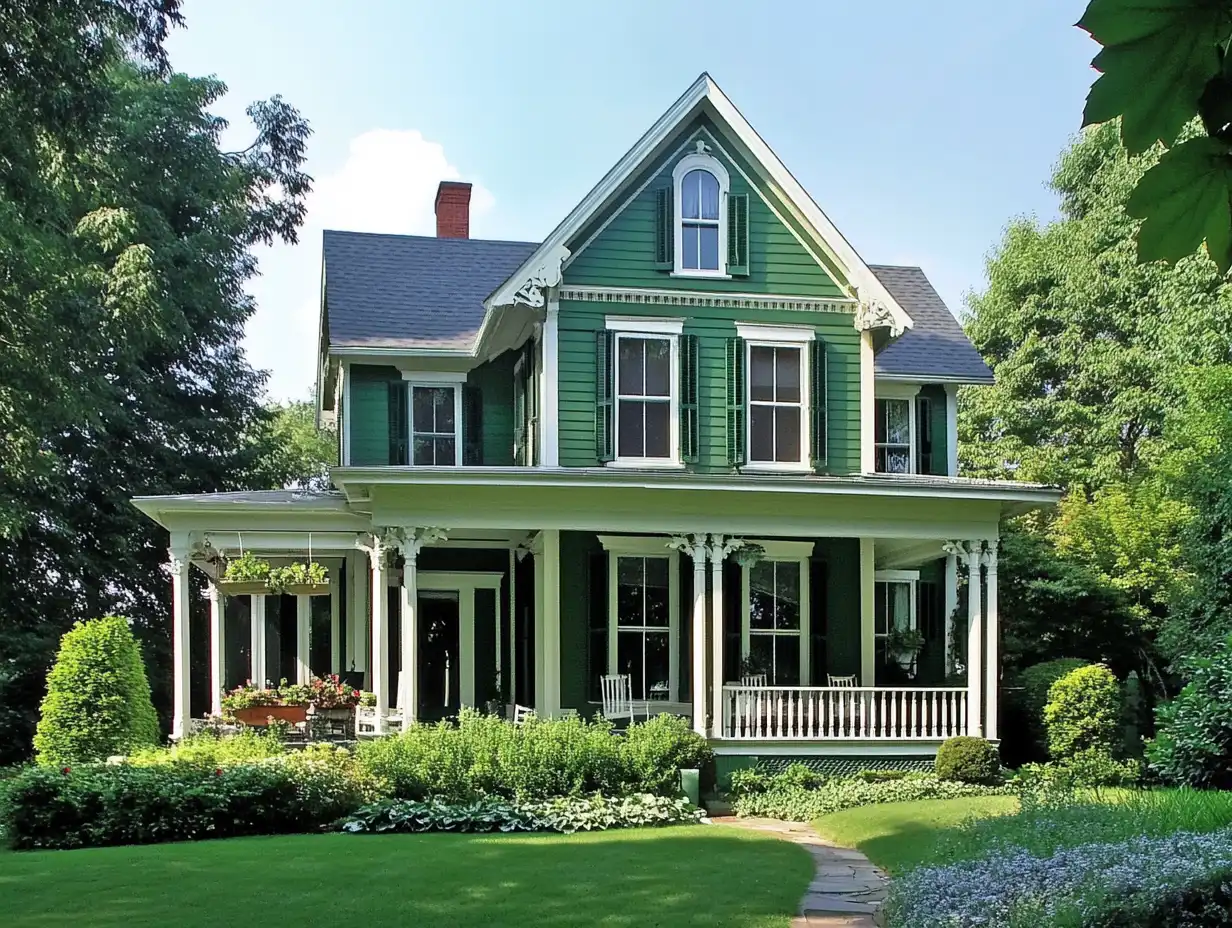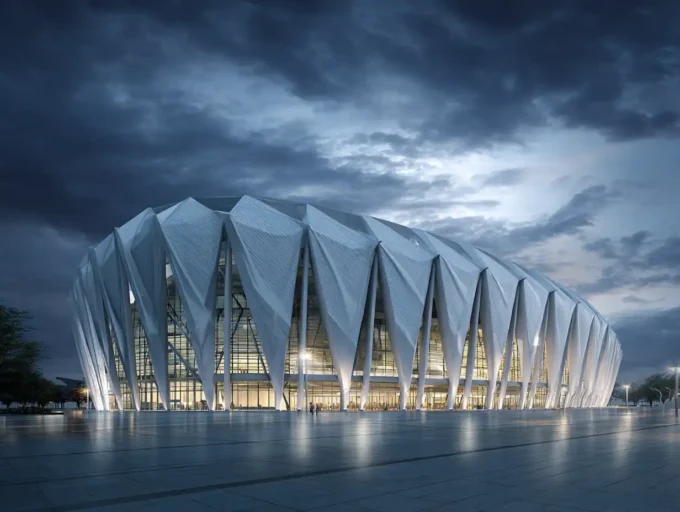When it comes to American homes, the variety of architectural styles is as diverse as the country itself. From charming cottages to grand colonial estates, each design tells a story about the era and region it originated from. These iconic styles not only shape our neighborhoods but also reflect our evolving tastes and lifestyles.
As we explore these popular house designs, we’ll uncover what makes each one unique and why they’ve stood the test of time. Whether you’re dreaming of your future home or just love architecture, understanding these styles can inspire and guide your vision. Let’s dive into the details of these timeless American classics.
Colonial-Style Homes
Colonial-style homes are timeless, drawing inspiration from early American architecture. These houses, known for their symmetry and classic proportions, remain a dominant choice across the United States.
Key Features
Colonial-style homes often feature rectangular layouts and two or three stories. Symmetrical facades are common, with evenly spaced shuttered windows and a centered front door. Roofs are typically steep and gabled. Interior layouts prioritize functionality, with formal dining and living rooms on the ground floor and bedrooms upstairs. Porches and columns, as seen in Georgian and Federal variations, add decorative appeal.
Historical Significance
This design dates back to the 17th century, originating in the original American colonies. Early settlers, including those from England, Spain, and France, influenced the style’s development. Its enduring popularity reflects its ability to adapt over centuries, blending traditional elements with modern living. Many historic neighborhoods in New England and the Mid-Atlantic showcase preserved colonial homes, underscoring their cultural importance.
Ranch-Style Homes
Ranch-style homes gained popularity in the mid-20th century and remain a beloved choice across the United States. These single-story homes emphasize simplicity, functionality, and a connection to the surrounding landscape.

Open Floor Plans
Ranch-style homes commonly feature open floor plans, enhancing space and flow. The living, dining, and kitchen areas often merge without dividing walls. This layout maximizes natural light and creates versatile spaces suitable for both families and entertaining. By eliminating barriers between rooms, ranch homes encourage easy movement and communication.
Indoor-Outdoor Living
Indoor-outdoor living defines the ranch-style aesthetic. Large sliding glass doors, patios, and expansive windows frequently provide direct access to outdoor spaces. These design elements foster a seamless connection between the home and nature. With practical yard access, ranch homes accommodate outdoor dining, relaxation, and recreation, making them ideal for enjoying sunny weather.
Craftsman-Style Homes
Craftsman-style homes exemplify a blend of elegance and practicality. Emerging from the Arts and Crafts movement of the late 19th century, these homes focus on handcrafted details and harmonious designs.

Unique Architectural Details
Craftsman homes highlight a low-pitched roof with wide eaves and exposed rafters. Front porches supported by thick, tapered columns create inviting entrances. Double-hung windows with divided panes often frame the structure. Built-in features such as bookshelves and window seats enhance the interior functionality and aesthetic. These homes often prioritize balanced proportions and subtle, eye-catching craftsmanship.
Use of Natural Materials
Natural elements and materials define the Craftsman aesthetic. Wood, brick, and stone are prominent, often used to blend the home with its surroundings. Exterior siding commonly utilizes wood shingles, while interior surfaces feature rich woodwork, including beams, cabinetry, and trim. Unpolished stonework adds a touch of rustic charm, establishing a connection to nature both inside and out.
Victorian-Style Homes
Victorian-style homes gained popularity during the late 19th century and remain admired for their intricate detail and historic charm. These homes reflect the grandeur of the Victorian era and often stand out as statement pieces in neighborhoods.

Ornate Design Elements
Victorian-style homes are defined by their elaborate and decorative features. Key elements include steep, multi-faceted roofs, textured shingles, and intricate woodwork, such as carved brackets and spindlework trim. Towers, turrets, and bay windows add depth and verticality, while wraparound porches enhance curb appeal. Vibrant, multi-color palettes often highlight the intricate detailing.
Stained glass windows are another hallmark, casting colorful light into interiors. Decorative patterns on gables and overhangs emphasize their elaborate design aesthetic. These distinctive features make Victorian homes some of the most visually striking architectural designs in America.
Inspirations Behind Victorian Styles
The design of Victorian-style homes draws inspiration from Europe’s Gothic Revival and Queen Anne styles. Emerging during the industrial revolution, these homes feature mass-produced detailing made possible by advancements in manufacturing. This era’s prosperity allowed for more extravagant designs, turning each home into a showcase of individuality and wealth.
Victorian homes’ stylistic diversity stems from blending global influences, including Italianate and Eastlake motifs, creating designs that feel both timeless and specific to their period. These inspirations, combined with a focus on ornate craftsmanship, make Victorian homes a lasting symbol of elegance and architectural artistry.
Modern and Contemporary Homes
Modern and contemporary homes redefine American architecture with clean lines and innovative spaces. These designs prioritize functionality and a connection to the environment.

Minimalist and Sleek Aesthetics
Modern and contemporary homes emphasize uncluttered spaces and streamlined forms. Flat or low-pitched roofs, expansive windows, and open floor plans dominate these designs, fostering an airy, spacious feel. Materials like glass, steel, and concrete often replace traditional wood, adding a futuristic touch. Neutral color palettes, such as whites, grays, and earth tones, amplify the minimalist aesthetic. Many homes in this style integrate sustainable materials and energy-efficient features to align with modern environmental values.
Focus on Function and Simplicity
The architecture of modern homes prioritizes functionality over ornamental design. Spaces are purposefully created for adaptability, with multifunctional rooms and seamless transitions between the indoors and outdoors. Sliding glass doors, private courtyards, and rooftop terraces enhance usability while maximizing space efficiency. Built-in furniture and minimal decorative elements keep the emphasis on simplicity without compromising comfort. Practicality and innovation make these homes timeless for evolving lifestyles.
Farmhouse-Style Homes
Farmhouse-style homes blend a rustic aesthetic with functional layouts, creating a welcoming and practical design. Originating in rural America, these homes exude charm while embracing modern adaptations.

Rustic Charm
Classic farmhouse designs focus on simplicity and utility, inspired by their agricultural roots. These homes typically feature pitched roofs, rectangular layouts, and spacious front porches. Exposed beams, wooden floors, and shiplap walls enhance the warm, rustic ambiance. Large, centrally-located kitchens serve as gathering spaces, often accompanied by apron-front sinks and built-in cabinetry. Neutral color palettes, including whites, grays, and soft earth tones, contribute to the cozy, understated appeal.
Modern Farmhouse Variations
Modern farmhouse variations update traditional elements with contemporary features. Open floor plans, oversized windows, and high ceilings provide abundant natural light and enhance functionality. These designs integrate modern materials like metal accents, sleek lighting fixtures, and quartz countertops while retaining characteristic wood finishes. Barn doors, black-framed windows, and clean-line furniture enhance the style with a fresh, minimalist touch. Exterior features like board-and-batten siding and monochromatic color schemes create a seamless blend of past and present.
Conclusion
American house designs showcase the rich cultural and historical influences that have shaped the country’s architectural landscape. Each style, from Colonial to modern, highlights distinct features that cater to diverse preferences and lifestyles. By examining their defining elements, we can better appreciate their unique contributions to neighborhoods across the nation.
Understanding the adaptability of Colonial homes, the simplicity of ranch-style layouts, or the intricate details of Victorian architecture helps us recognize how these designs have persisted through time. Craftsman homes emphasize artistry and natural materials, while modern and contemporary styles prioritize functionality and environmental integration. Farmhouse designs blend rustic charm with modern practicality, offering a timeless appeal.
These iconic designs inspire creativity in homebuilding and renovation, connecting tradition with innovation. By embracing these styles, we preserve their heritage while advancing American architecture.
- American colonial architecture
- American farmhouse style
- American home styles
- American house designs
- American vintage homes
- architectural styles USA
- bungalow house plans
- Cape Cod house design
- classic home design ideas
- classic house designs
- craftsman home designs
- famous American houses
- historic American architecture
- house design inspiration
- iconic American houses
- mid-century modern homes
- modern American homes
- period home styles USA
- popular house styles
- ranch style houses
- Southern house designs
- timeless home architecture
- traditional American homes
- Victorian house style














Leave a comment